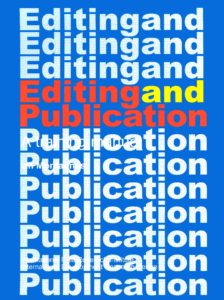 As editors, we worry about the one that got away: The author we should have recruited. The reviewer we should have enlisted. The paper we should have accepted. And maybe the book we should have reviewed.
As editors, we worry about the one that got away: The author we should have recruited. The reviewer we should have enlisted. The paper we should have accepted. And maybe the book we should have reviewed.
In the early 1990s, I was book review editor of CBE [Council of Biology Editors] Views, the forerunner of Science Editor. In this role, I received the book Editing and Publication: A Training Manual, by Ian Montagnes. The book, published in 1991 by the International Rice Research Institute (IRRI) and the International Development Research Centre, was based on a course to help editors at research institutes and extension agencies in Asia, Africa, and Latin America.
Somehow, the book was not among those I sent for review. I do not recall why. Perhaps its emphasis differed too much from that of the Council at the time. Perhaps I had trouble finding a reviewer. Or perhaps it was because readers had to order the book from IRRI, in the Philippines.
So the book stayed on my shelf. A few years later, I started teaching a yearly course on science editing. I also became involved in training science editors in China and other countries. I returned to Editing and Publication: A Training Manual and found it to be an excellent resource: informative, wise, readable, and well designed. But obtaining the book from the Philippines for my students remained a challenge. I waited tensely as my shipments of it were delayed.
In recent years, though, Editing and Publication: A Training Manual has become openly available online, at http://books.irri.org/9712200094_content.pdf. So has its companion volume, Editing and Publication: A Handbook for Trainers (http://books.irri.org/9712200086_content.pdf), which provides guidance in giving such a course and contains sample exercises. Because the now freely accessible Training Manual contains much of lasting value—plus items now of historical interest—it merits some belated attention.
Items of continuing use in the book include
- guidance on word choice and related matters
- advice on working with authors
- concise guidance on editing the parts of a scientific paper
- an example of how to start a feature article 8 ways (e.g., with information, an anecdote, or contrast)
- a procedure for drafting titles for nonspecialist publications
- guidance on editing maps and choosing photographs
- a list of ways to reduce costs of producing printed materials
I also continue to appreciate the list of qualities of good editors.
The digital revolution, though, has relegated some of the content to history. Examples of items no longer current include the advice on designing a publication on a typewriter, on manually estimating the length of a manuscript, on instructing a typesetter, on preparing illustrations for the printer, and on checking proofs (Anyone else remember galley proofs?). Speculating about the future, Montagnes writes:
Imagine a journal without paper. Everyone connected with it has a computer terminal, and they are all linked together by telephone wires or radio. An author writes a paper on a personal word processor. It is transmitted electronically to the editor of this “electronic journal.” The editor sends the article, again electronically, to referees, who reply in turn through the electronic network. Their comments are passed to the author by computer. The author revises on the word processor, and sends the revision back to the editor. If the editor accepts the revised article, it goes into the “journal” which means it becomes available to readers who have subscribed to the journal and receive articles on their own computers at home or in the office. They may reply in “letters to the editor” electronically.
Insightfully, he also writes:
The computer can help editors to produce publications more quickly, and sometimes (but not always) more cheaply. The computer can also help us to maintain good business records, good sales records, and good mailing lists. It can help us to decide how many copies to print and how to distribute them more effectively.
But it cannot help us to decide what we will publish. And it can be only a partial help in reaching the intended reader with what we publish. Those are acts that require human, creative intelligence. They are the acts that lie at the heart of publishing.
Words worth reading, even 30 years after their publication.
Barbara Gastel teaches science writing, science editing, and related subjects at Texas A&M University. She was editor of Science Editor from 2000 to 2010.
Opinions expressed are those of the authors and do not necessarily reflect the opinions or policies of their employers, the Council of Science Editors or the Editorial Board of Science Editor.
